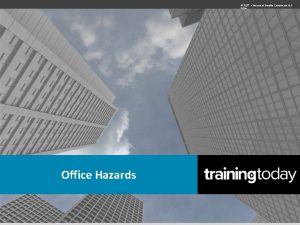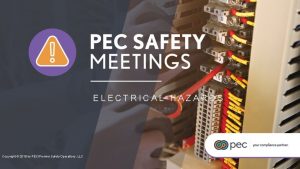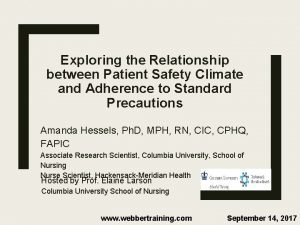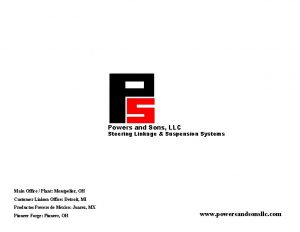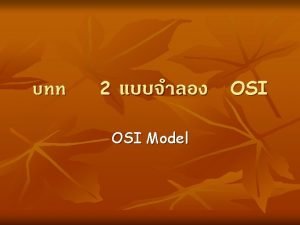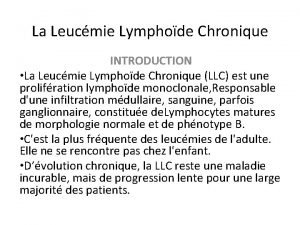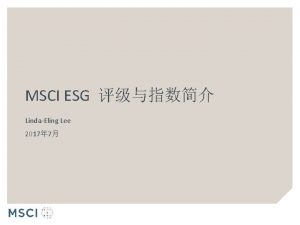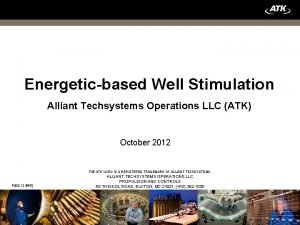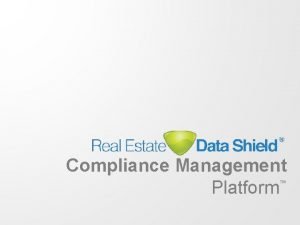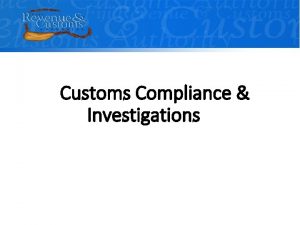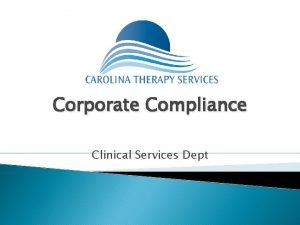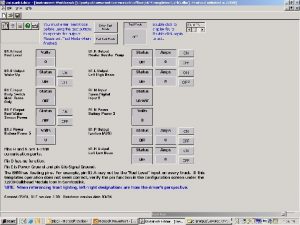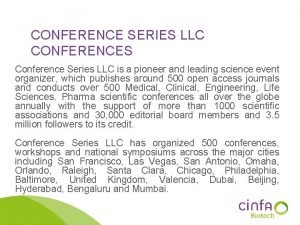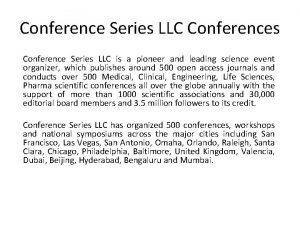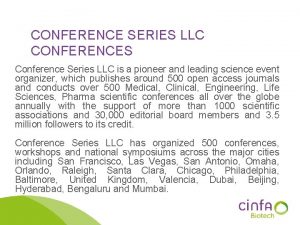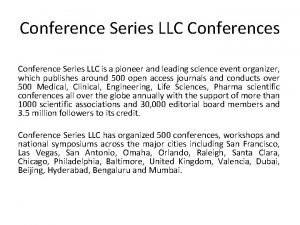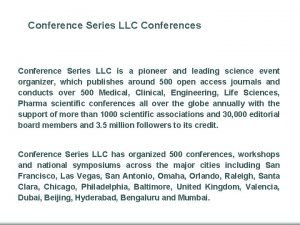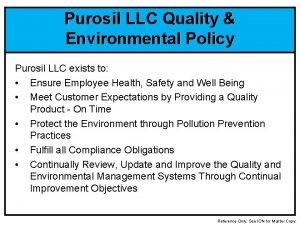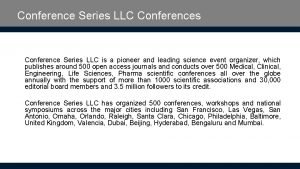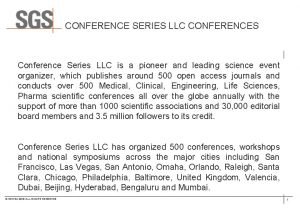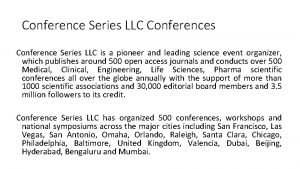Clinical Safety Compliance and Safety LLC 2010 Safety
![Clinical Safety Compliance and Safety LLC (2010), Safety Workplace Signs [image]. Retrieved from https: Clinical Safety Compliance and Safety LLC (2010), Safety Workplace Signs [image]. Retrieved from https:](https://slidetodoc.com/presentation_image_h2/625567fc4cefbc0799927d978965238a/image-1.jpg)






![Chemical Hazards • Warning Signs Clker. Free. Vector. Images (2007), No Title [image]. Retrieved Chemical Hazards • Warning Signs Clker. Free. Vector. Images (2007), No Title [image]. Retrieved](https://slidetodoc.com/presentation_image_h2/625567fc4cefbc0799927d978965238a/image-8.jpg)



![Ergonomic Hazards Sitting By Yamavu (Own work) [CC 0], via Wikimedia Commons. Retrieved from Ergonomic Hazards Sitting By Yamavu (Own work) [CC 0], via Wikimedia Commons. Retrieved from](https://slidetodoc.com/presentation_image_h2/625567fc4cefbc0799927d978965238a/image-12.jpg)






![Thermal Hazards Extinguishers Kocio (2005), Fire extinguisher [photograph]. Retrieved from https: //commons. wikimedia. org/wiki/File: Thermal Hazards Extinguishers Kocio (2005), Fire extinguisher [photograph]. Retrieved from https: //commons. wikimedia. org/wiki/File:](https://slidetodoc.com/presentation_image_h2/625567fc4cefbc0799927d978965238a/image-19.jpg)


![Radiation Hazards By OSHA Safety and Health Topics [Public domain], via Wikimedia Commons, retrieved Radiation Hazards By OSHA Safety and Health Topics [Public domain], via Wikimedia Commons, retrieved](https://slidetodoc.com/presentation_image_h2/625567fc4cefbc0799927d978965238a/image-22.jpg)






- Slides: 28
![Clinical Safety Compliance and Safety LLC 2010 Safety Workplace Signs image Retrieved from https Clinical Safety Compliance and Safety LLC (2010), Safety Workplace Signs [image]. Retrieved from https:](https://slidetodoc.com/presentation_image_h2/625567fc4cefbc0799927d978965238a/image-1.jpg)
Clinical Safety Compliance and Safety LLC (2010), Safety Workplace Signs [image]. Retrieved from https: //commons. wikimedia. org/wiki/File: Workplace_Safety_Signs. jpg

Risks Accidents 10, 000 device related injuries in the US every year due: • Improper use • Inadequate training • Improper (lack of) use of manuals • Device failure

Types of Hazards • Biological • Chemical • Physical Public Domain (simple geometry). Retrieved from https: //commons. wikimedia. org/wiki/File: Radiation_warnin g_symbol. svg

Biologic Hazards Body fluids that require precautions Amniotic fluid Blood Cerebrospinal fluid Feces Nasal secretions Pericaridial fluid Peritoneal fluid Perspiration Pleural fluid Saliva Semen Sputum Synovial fluid Urine Vaginal secretions Vomitus

Biologic Hazards • Precautions • Any blood spills must be cleaned/disinfected immediately • Individuals with open wounds or abrasions should wear finger cots/gloves when handling blood specimens • immunization Lars Klintwall Malmqvist (Larsklintwallmalmqvist) (Own work) [Public domain], via Wikimedia Commons Nadina Wiórkiewicz pl. wiki: Nadine 90 commons: Nadine 90 [CC BY-SA 3. 0 (http: //creativecommons. org/licenses/by-sa/3. 0)], via Wikimedia Commons

Chemical Hazards Risks: • Cleaning agents, disinfectants • Caustic, irritating • Anesthetics • Drugs • Fire-flammable liquids • Compressed gases – oxygen, air

Chemical Hazards • Precautions • • Know the nature of the chemical used Label chemicals properly Prohibit mouth pipetting Observe basic rule “acid to water” Chemical spills containment Use safety cans, fume hood, and cabinets Wear proper attire No author (2007), Hazard Symbols [image]. Retrieved from https: //en. wikipedia. org/wiki/GHS_hazard_pictograms
![Chemical Hazards Warning Signs Clker Free Vector Images 2007 No Title image Retrieved Chemical Hazards • Warning Signs Clker. Free. Vector. Images (2007), No Title [image]. Retrieved](https://slidetodoc.com/presentation_image_h2/625567fc4cefbc0799927d978965238a/image-8.jpg)
Chemical Hazards • Warning Signs Clker. Free. Vector. Images (2007), No Title [image]. Retrieved from https: //pixabay. com/en/warnings-hazards-danger-symbols-28709/

Physical Hazards • Ergonomic • Mechanical • Noise • Thermal • Radiation • Electrical

Ergonomic Hazards • Carpal tunnel syndrome: compressed median nerve due to swelling of the tendon sheath. Causes: Prolonged flexing of the wrist – typing. • Tendentious: inflamed tendons. Causes: Excess motion or stress. • White Finger - loss of adequate blood supply to fingers. Causes: Vibrations, very tight pressure. • Lower back pain – Causes: Incorrect posture.

Ergonomic Hazards Lifting • Keep back straight • Lift with legs • Do not use rapid motion • Do not twist • Do not raise above shoulders Unknown or not provided (U. S. National Archives and Records Administration) [Public domain], via Wikimedia Commons
![Ergonomic Hazards Sitting By Yamavu Own work CC 0 via Wikimedia Commons Retrieved from Ergonomic Hazards Sitting By Yamavu (Own work) [CC 0], via Wikimedia Commons. Retrieved from](https://slidetodoc.com/presentation_image_h2/625567fc4cefbc0799927d978965238a/image-12.jpg)
Ergonomic Hazards Sitting By Yamavu (Own work) [CC 0], via Wikimedia Commons. Retrieved from https: //commons. wikimedia. org/wiki/File: Computer_Workstation_Variables_cleanup. png

Mechanical Hazards • Use eye and hand protection • Wear gloves when handling steel cabling • Wear closed rubber soled leather shoes with steel toes • Use face shields, safety glasses • Wear dry, hole-free insulating gloves • Do NOT wear loose items such as rings, necklaces, bracelets, long hair, loose clothing, neckties, scarves, earrings, and beards • Watch out for sharp objects, pinch points, and moving objects

Mechanical Hazards Compressed gases can explode Ildar Sagdejev (Specious) (Own work) [GFDL (http: //www. gnu. org/copyleft/fdl. html) or CC BY-SA 4. 0 -3. 0 -2. 5 -2. 0 -1. 0 (http: //creativecommons. org/licenses/by-sa/4. 0 -3. 0 -2. 5 -2. 0 -1. 0)], via Wikimedia Commons

Electrical Hazards BMETs can be exposed to very high voltages and can be at risk of electrical shock or burns By Amityadav 8 (Electrical Hazard Sign) Retrieved from: https: //commons. wikimedia. org/wiki/File: Electrical_Hazard. tif

Electrical Hazards • • • • Know where the panels and circuit breakers are located. Label all circuit breakers and fuse boxes clearly. Understand lock out and tag out of circuits. Disconnect and lockout the power supply before any maintenance tasks or adjustments. Do not block access to panels, circuit breakers, or fuse boxes. Always use the correct size fuse. Use non-conductive ladders and step stools. Risk of electric shock is higher in wet locations use GFCIs (Ground Fault Circuit Interrupters) in wet locations. Do not touch a person or electrical apparatus in the event of an electrical accident. Always disconnect the power source first. Do not reach into an electrical panel using both hands. Do not wear rings or carry metallic materials on your body which may bridge conductors. Be sure you are properly trained in CPR. Never assume a circuit is de-energized, measure voltage with an appropriate instrument. Do not disconnect energized circuits except with designed switching devices. Do not work on high voltage without appropriate tools and training. Use safety testers where appropriate to check proper polarity, leakage, and grounding.

Noise Hazards Continuous noise limits • 85 d. BA, 8 hour TWA - Action Level • 90 d. BA, 8 hour TWA - Permissible Exposure Impact noise • No exposures above 140 d. B shall be permitted Safety • Ear Plugs Kick the beat (self-made (Original text : selbst fotografiert)) [Public domain], via Wikimedia Commons

Thermal Hazards Fuel Sources • • Wood based, cloth, paper, rubber, certain plastics Flammable liquids, gases, petroleum products Energized or electrical equipment, conductors or appliances Combustible metals, such as sodium, potassium, magnesium
![Thermal Hazards Extinguishers Kocio 2005 Fire extinguisher photograph Retrieved from https commons wikimedia orgwikiFile Thermal Hazards Extinguishers Kocio (2005), Fire extinguisher [photograph]. Retrieved from https: //commons. wikimedia. org/wiki/File:](https://slidetodoc.com/presentation_image_h2/625567fc4cefbc0799927d978965238a/image-19.jpg)
Thermal Hazards Extinguishers Kocio (2005), Fire extinguisher [photograph]. Retrieved from https: //commons. wikimedia. org/wiki/File: Fire. Extinguisher. ABC. jpg

Thermal Hazards Extinguishers: • Air pressurized water • APWs are designed for Class A (wood, paper, cloth, rubber, and certain plastics) fires only. • Carbon Dioxide • CO 2 extinguishers are designed for Class B and C (flammable liquid and electrical) fires only. • Dry Chemical extinguishers will have a label indicating they may be used on class A, B, and/or C fires.

Thermal Hazards Extinguishers • • Pull… Aim… Squeeze… Sweep…
![Radiation Hazards By OSHA Safety and Health Topics Public domain via Wikimedia Commons retrieved Radiation Hazards By OSHA Safety and Health Topics [Public domain], via Wikimedia Commons, retrieved](https://slidetodoc.com/presentation_image_h2/625567fc4cefbc0799927d978965238a/image-22.jpg)
Radiation Hazards By OSHA Safety and Health Topics [Public domain], via Wikimedia Commons, retrieved from https: //commons. wikimedia. org/wiki/File: OSHA_radiation_spectrum. jpg

Radiation Hazards • • Alpha Beta Gamma X-rays

Radiation Hazards Sources: • Medical X-ray (β-rays) • Nuclear Medical Exposures • Hospital radioactive waste

Radiation Hazards Dangers: • DNA damage is cumulative • Cells are most sensitive to radiation damage if – Have a high mitotic (cell division) rate – A slow long mitotic cycle • Exposure to the eyes causes cataract formation.

Radiation Hazards (Light) • Radiowaves & Microwaves • Infrared Light • Visible Light • Ultrasound • UV Light Penubag (talk · contribs) on 05: 04, 15 May 2008 [CC BY-SA 2. 5 (http: //creativecommons. org/licenses/by-sa/2. 5)], via Wikimedia Commons

Radio Frequency Interference Hazards Cell Phones Tim Parkinson [CC BY 2. 0 (http: //creativecommons. org/licenses/by/2. 0)], via Wikimedia Commons. Retrieved from https: //commons. wikimedia. org/wiki/File: Man_speaking_on_mobile_phone. jpg

Radio Frequency Interference Hazards • Cell phones can cause electromagnetic interference (EMI) with laboratory equipment. • This includes sending/receiving text messages and making/receiving phone calls. • Switch off cell phones (mobile devices) when working with ECG's.
 Simplify compliance llc
Simplify compliance llc 233 general patton ave mandeville la
233 general patton ave mandeville la National safety compliance quiz answers 11-013
National safety compliance quiz answers 11-013 Powers and sons
Powers and sons Personal finance unit 4 lesson 2 business plans
Personal finance unit 4 lesson 2 business plans Yellow and blue make what
Yellow and blue make what Advanced fusion systems llc
Advanced fusion systems llc Sobel & co., llc
Sobel & co., llc Plankey air llc
Plankey air llc Getting nerdy llc
Getting nerdy llc Teejan uae
Teejan uae Star feeders
Star feeders Woodfield pharmaceutical
Woodfield pharmaceutical Characteristics of physical layer
Characteristics of physical layer Majees technical services llc
Majees technical services llc Leucmie
Leucmie Impaq international llc
Impaq international llc Huawei tech (uae) fz-llc 1
Huawei tech (uae) fz-llc 1 Llc definition
Llc definition Hewitt associates benefits
Hewitt associates benefits Hector sky food stuff trading llc
Hector sky food stuff trading llc Grizzly operating llc
Grizzly operating llc Gateway travel management
Gateway travel management Fusion medical staffing llc
Fusion medical staffing llc Linda eling lee
Linda eling lee Alliant techsystems operations llc
Alliant techsystems operations llc Ecapital portal
Ecapital portal Member managed llc
Member managed llc Llc meaning
Llc meaning
